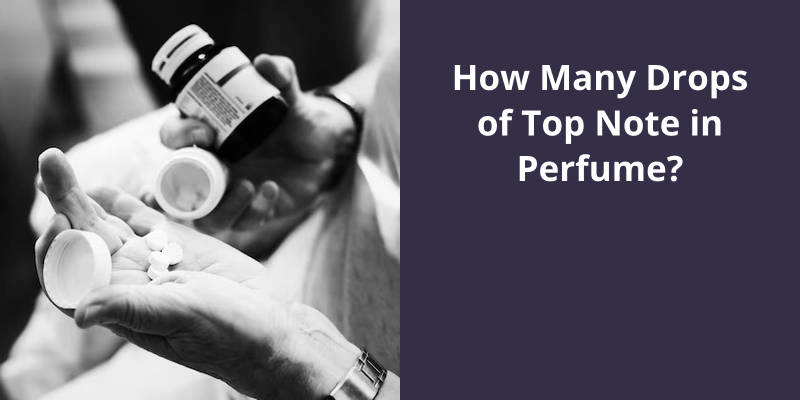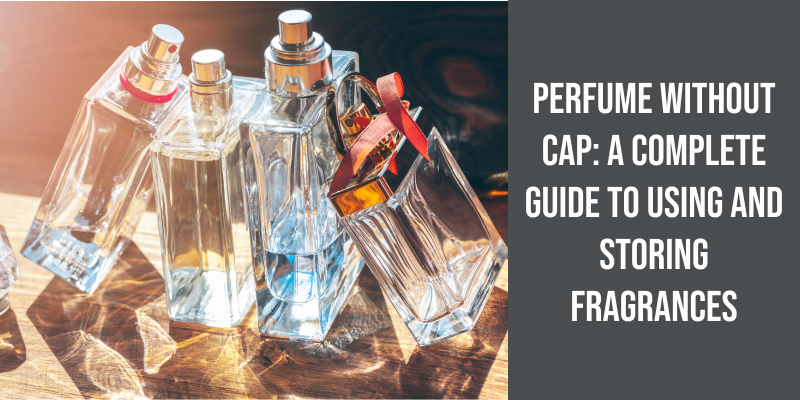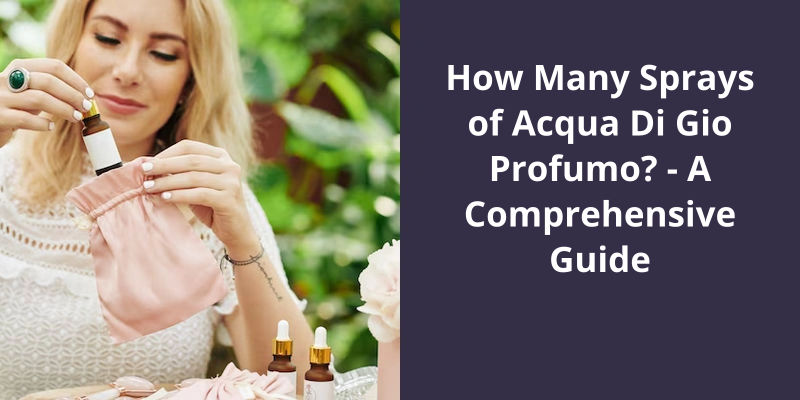Creating a beautiful and captivating scent requires the delicate art of blending various fragrance notes, each playing a unique role in the overall composition. Among these notes, the top note holds a crucial position, as it’s the first impression that greets our senses. The top note has the responsibility to entice and captivate, leaving a lasting impression. Crafting the perfect perfume involves understanding the precise balance between notes, but how many drops of the top note should be used to achieve the desired aroma? While there’s no one-size-fits-all answer to this question, mastering the skill of top note usage is essential for perfume creation. It requires a careful consideration of factors such as the strength of the top note, the desired intensity of the fragrance, and the overall composition. By striking the right balance between creativity and technical knowledge, perfumers can confidently determine the ideal number of drops of top note to enhance the olfactory experience and create a scent that evokes emotions, memories, and a sense of individuality.

How Long Does Each Perfume Note Last?
How long each perfume note lasts can vary depending on several factors, including the specific fragrance, concentration, and individual body chemistry. When you first apply a perfume, you may notice that the scent is strongest and most vibrant. These initial aromas are known as the top notes or “head” notes. They typically last for around 5 to 15 minutes before dissipating.
The purpose of top notes is to provide an enticing initial impression and grab your attention. They’re often light, fresh, and citrusy, creating a burst of fragrance upon application. However, they’ve a high volatility, meaning they evaporate quickly. This can explain why your perfume seems to “disappear” so quickly after applying it.
Finally, the base notes enter the stage. These are the deep, rich, and long-lasting notes that linger on the skin for hours. Base notes can include ingredients like woods, musk, vanilla, or amber. They’ve a low volatility, which allows them to remain detectable for an extended period of time.
It’s important to note that each persons skin chemistry is unique, and that can impact the longevity of perfume notes. Factors such as body temperature, hydration levels, and pH balance can all affect how long a perfume lingers on the skin. Additionally, the concentration of the perfume, with parfum having the highest concentration and eau de toilette having a lower concentration, can also influence the staying power of the fragrance.
The Different Categories and Types of Perfumes (e.g. Eau De Parfum, Eau De Toilette, Cologne)
Perfumes fall into different categories and types, each with it’s own concentration of scent oils. Eau de parfum (EDP) has a higher concentration, generally between 15% to 20%, making it long-lasting. Eau de toilette (EDT) contains a lower concentration, typically around 5% to 15%, offering a lighter scent that doesn’t last as long. Cologne, or eau de cologne (EDC), has the lowest concentration, usually less than 5%, resulting in a subtle fragrance that fades quickly.
When creating a fragrance blend, it’s important to consider the proportions of each note. To achieve a well-rounded blend, aim for 30% top note oils, 50% middle note oils, and 20% base note oils. For example, if your blend consists of 10 drops in total, you’d use 3 drops of a top note, 5 drops of a middle note, and 2 drops of a base note. This careful balance will ensure that each note complements the others and creates a harmonious scent.
How Many Drops for Top Middle and Base Notes?
Creating a well-balanced and harmonious perfume blend involves understanding and considering the different notes that make up a fragrance. The three main categories of notes in perfume are top notes, middle notes (also known as heart notes), and base notes. Each category has it’s own unique characteristics and purpose in creating a complete fragrance.
Top notes are the first impressions of a perfume and are typically light, fresh, and volatile. They evaporate quickly and provide an initial burst of fragrance. Examples of top notes include citrus oils like bergamot and lemon, as well as light floral notes like lavender or neroli. When blending a perfume, the top notes should make up around 30% of the total blend.
Middle notes are the heart of a fragrance and provide the body and fullness. They emerge after the top notes have evaporated and last longer on the skin. Examples of middle notes include rose, jasmine, ylang-ylang, and various spices.
Base notes are the foundation of a fragrance and provide depth, richness, and longevity. They’re the slowest to evaporate and can linger on the skin for hours. Base notes are usually woody, resinous, or musky, providing a solid base for the more volatile top and middle notes. Some common base notes include sandalwood, patchouli, vanilla, and amber.
To determine the number of drops for each category, you can use a simple percentage breakdown. For example, if you’re making a blend of 10 drops in total, you’d use approximately 3 drops of a top note oil, 5 drops of a middle note oil, and 2 drops of a base note oil. This ensures that your fragrance has a balanced composition with a well-defined top, heart, and base.
Remember that these guidelines are just starting points, and you can adjust them based on personal preference and the strength of the oils you’re using. Experimentation and testing are key to finding the perfect balance and creating a fragrance that suits your taste. Enjoy the creative process and have fun exploring the world of fragrance blending!
When it comes to blending perfume, the ratio of essential oil to carrier oil or alcohol is crucial. A typical perfume blend consists of about 15% to 30% essential oil, ensuring a balanced and pleasing scent. To achieve this ratio, approximately 20 drops of essential oil or absolute are combined with 80 drops of carrier oil or alcohol. This delicate balance allows for optimal fragrance without overwhelming the senses. So whether you’re a DIY enthusiast or a seasoned perfumer, understanding the right ratio for blending perfume is key to creating an enchanting olfactory experience.
What Is the Ratio for Blending Perfume?
When it comes to blending perfume, the ratio for combining essential oils and carrier oil or alcohol is crucial. In general, perfume blends are made up of approximately 15% to 30% essential oil. This means that for every 100 drops of perfume, around 15 to 30 drops would be essential oil or absolute. The remaining drops would consist of carrier oil or alcohol.
The top notes, also known as the first impression of a perfume, play a significant role in determining the overall fragrance. These notes are the most volatile and tend to evaporate quickly, which is why they’re often the first to be noticed when a perfume is applied. When it comes to adding top notes to a perfume blend, it’s recommended to use a smaller amount compared to the overall essential oil content.
This allows the top notes to make a noticeable but not overpowering impact on the scent. It’s important to strike a balance between the top, middle, and base notes to create a well-rounded and harmonious fragrance. Experimentation and personal preference play a crucial role in finding the perfect ratio for each individuals unique scent preferences.
Finding the right amount of perfume to apply can be a delicate balance. The concentration of the fragrance plays a key role in determining how much one should use. A true perfume, being more concentrated, requires only a couple of spritzes to create a lasting effect. On the other hand, an eau de toilette, with a lighter concentration, can be applied more generously like a refreshing body splash. So, how many squirts of perfume do you put on? Let’s explore this further.
How Many Squirts of Perfume Do You Put On?
When it comes to applying perfume, the general rule of thumb is to start with a small amount and gradually build up if needed. The number of sprays or drops you use will depend on the concentration of the fragrance. A true perfume, which has the highest concentration of aromatic oils, will only require a few drops or sprays to be effective. Typically, two spritzes should be sufficient to create a long-lasting scent.
On the other hand, an eau de toilette, which has a lower concentration of aromatic oils, can be applied more liberally. It’s more like a body splash and is meant to be refreshing rather than long-lasting. You may need to apply several sprays to get the desired effect.
It’s important to remember that everyones preferences and body chemistry are different, so you may have to experiment a bit to find the right amount for you. Some people may prefer a more subtle scent and opt for fewer sprays, while others may prefer a bolder fragrance and use more. Ultimately, it’s about finding what works best for you and makes you feel confident and comfortable.
In addition to considering the concentration of the fragrance, it’s also important to take into account the occasion and the environment youll be in. For a more formal or professional setting, it’s generally best to go for a lighter hand and apply less perfume. In a casual or social setting, you may feel more comfortable applying a bit more.
Overall, the key is to use your judgment and be mindful of not overpowering yourself or those around you. Experiment with different amounts and observe how the scent develops on your skin throughout the day. With a little trial and error, youll find the perfect amount of drops or sprays that suits your personal style and ensures a lasting and enjoyable fragrance experience.
Perfume Application Tips for Different Parts of the Body
When applying perfume, it’s important to consider the different parts of the body to enhance the fragrance and make it last longer. Here are some tips for application:
1. Wrists: Apply one or two drops of perfume on your wrists and gently rub them together. The warmth of your pulse points will help release the scent.
2. Neck: Dab a small amount of perfume on the base of your neck, behind your ears, and on your collarbone. These areas are great for enhancing the fragrance as they’re exposed and closer to your nose.
3. Hair: Spritz some perfume on your hairbrush or comb, then run it through your hair. This will lightly distribute the scent and give your hair a subtle fragrance. Avoid spraying perfume directly onto your hair, as it may dry it out.
4. Clothes: For a longer-lasting scent, you can also spray perfume on your clothes. Be cautious with delicate fabrics, as some perfumes may leave stains. It’s best to perform a patch test on an inconspicuous area before applying it liberally.
Remember, when it comes to perfume application, less is more. Start with a few drops, as too much can be overwhelming. Experiment with different fragrance concentrations and find what works best for you and the occasion. Enjoy discovering the art of perfume application!
Conclusion
It isn’t a matter of straightforward mathematics or fixed formulas, as each fragrance composition is unique and requires careful consideration of it’s intended scent profile. While there may be some general guidelines, relying solely on a specific number of drops can potentially limit the creative possibilities and hinder the development of truly exceptional perfumes.





